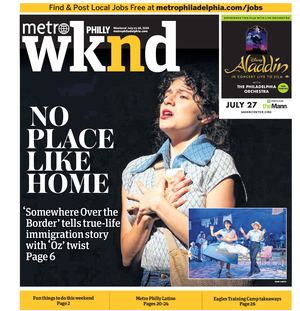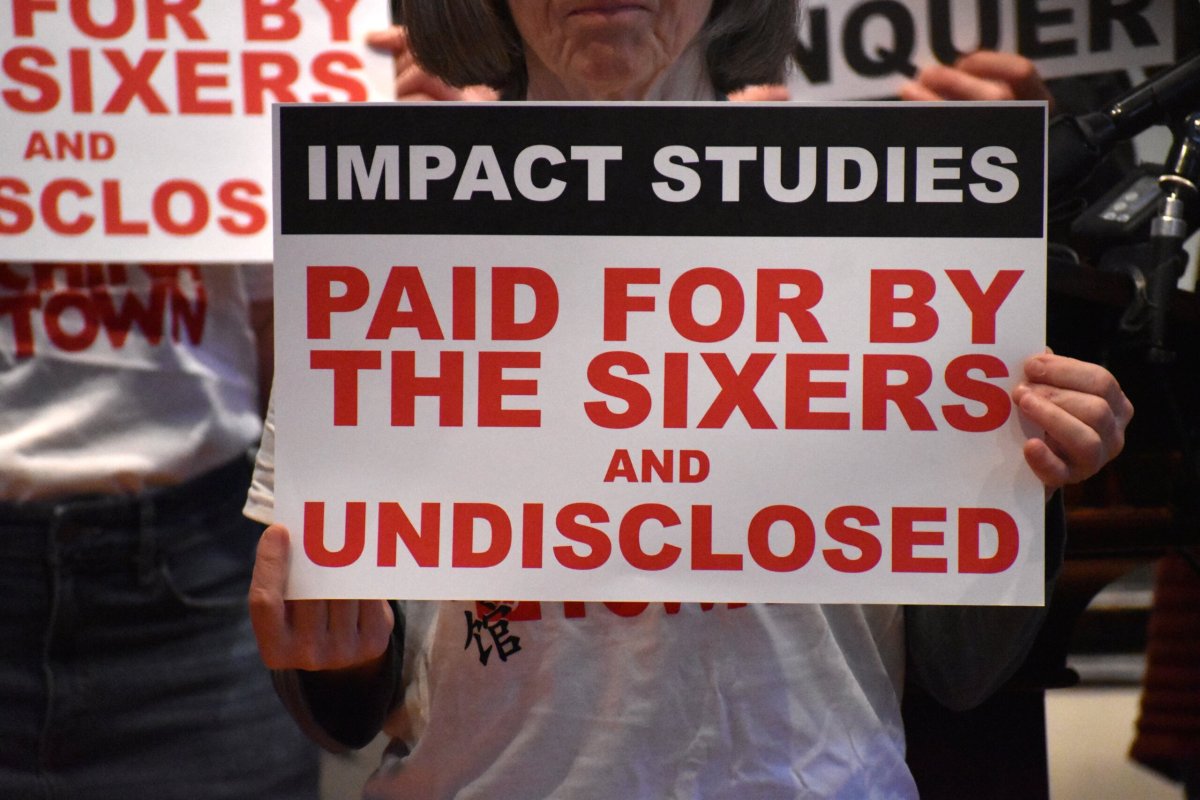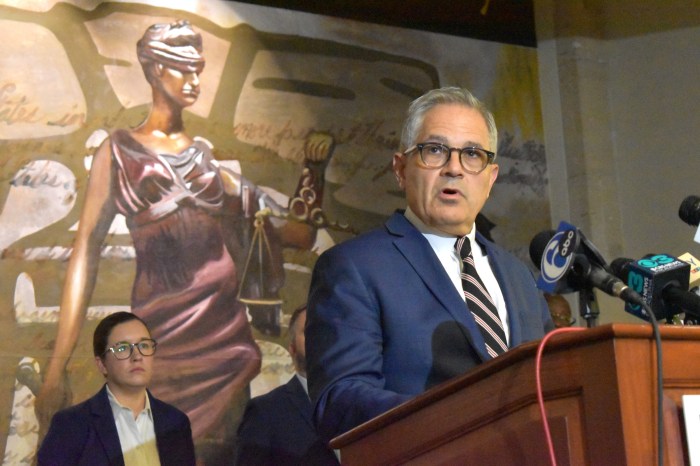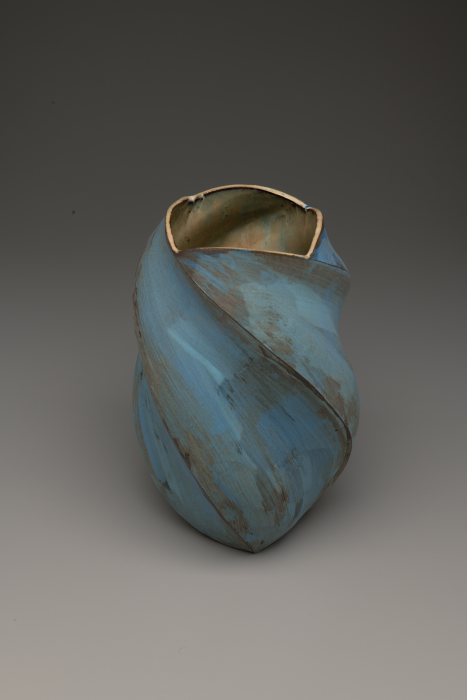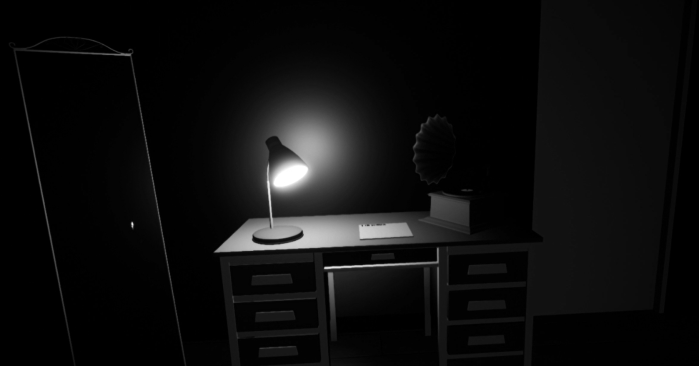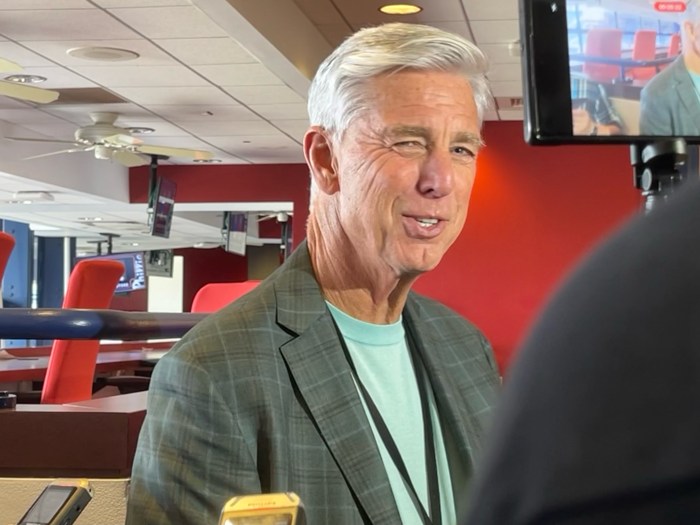Opponents of the 76ers proposed arena in Center City gathered Wednesday to cast doubt on yet-to-be released city-commissioned studies on the $1.55 billion project.
Such analyses are often used to justify arenas with wildly inaccurate projections, members of the Save Chinatown Coalition said.
“Every developer that wants to build an arena or a stadium like this, they commission expensive consultants for a study,” said Vivian Chang, executive director of Asian Americans United, a cornerstone of the anti-arena group. “After months of research, we have yet to find a single sports team-sponsored study that predicts any negative return from an arena.”
The Sixers development team is funding the analyses through a pot of money available through the Philadelphia Industrial Development Corporation, an arrangement that the coalition has contended with result in biased reports.
Representatives from Mayor Jim Kenney’s administration, which hired consultants to conduct the studies over the summer, stated that the team has no influence over the process and argued in favor of the set-up, saying no taxpayer money should go toward paying for the analyses.
Kenney’s office delayed the release of the community and economic impact reports, eventually saying that the studies would not be made public until he left City Hall. New Mayor Cherelle Parker’s team has not provided an updated timeline.
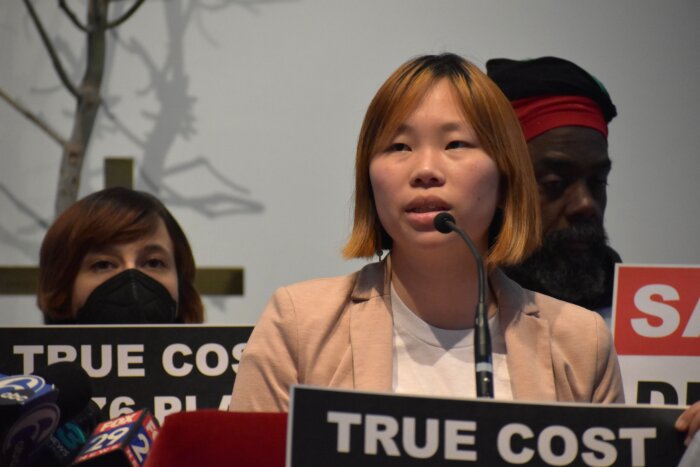
76DevCo, the development team behind the arena plan, have released estimates indicating that the project will generate $1 billion in local tax revenue and about $470 million for the commonwealth of Pennsylvania over the course of three decades, along with supporting thousands of jobs.
Other similar projects, including Capital One Arena in Washington, D.C., and the Chase Center in San Francisco, have fallen far short of projections, the Chinatown coalition representatives said.
“The facts from independent economists are inarguable,” said Rashida Ng, a University of Pennsylvania architecture professor. “Professional sports stadiums generate little-or-nothing for the cities that host them.”
76DevCo has pledged not to seek any city government funding for the arena, though they have said they are open to exploring state and federal dollars.
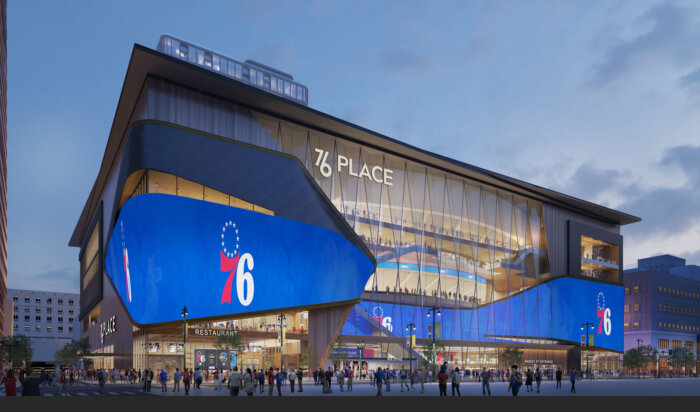
The coalition’s news conference was held at Old First Reformed United Church of Christ in Old City, and the congregation’s pastor, the Rev. Michael Caine, is not opposed to utilizing public money for construction projects.
Power tools could be heard Wednesday as crews worked on a parcel adjacent to the church. Old First Reformed is building 34 units of supportive housing for chronically homeless individuals, utilizing millions in federal and local dollars.
“I’m personally concerned about the way that we seem to be giving away our city to developers,” Caine said. “They’ve proven time and time again that their interest is not in building trust with Philadelphians.”
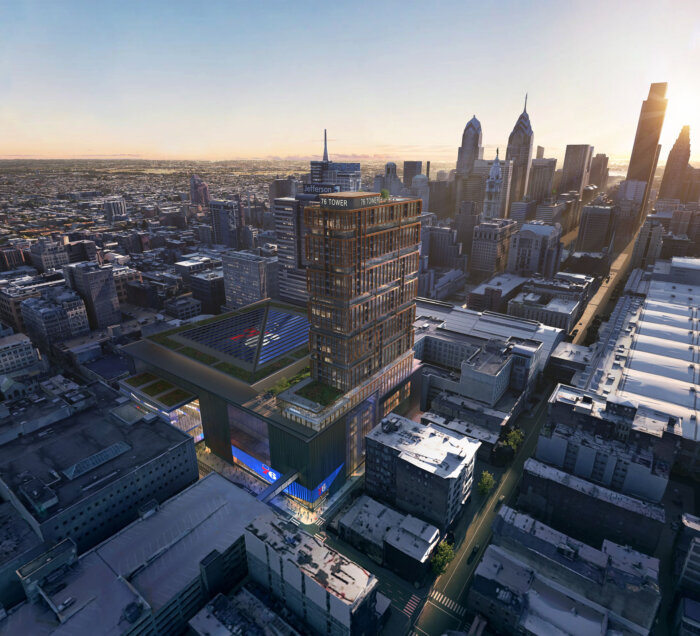
76DevCo will next have an opportunity to prove doubters wrong Tuesday, when the team goes before the city’s Civic Design Review committee for a second time. The committee, composed mostly of architectural and planning professionals, offers non-binding recommendations on large-scale development projects.
Ahead of that hearing, the city posted an updated master plan submitted by the developers that incorporated information from a transportation analysis, along with minor design revisions.
In addition to an 18,500-seat arena, 76 Place, as the project is known, is slated to include an apartment tower with nearly 400 units and an indoor plaza with dining and shopping options. It would occupy a section of the Fashion District mall, atop SEPTA’s Jefferson Station, along Market Street between 10th and 11th streets.
